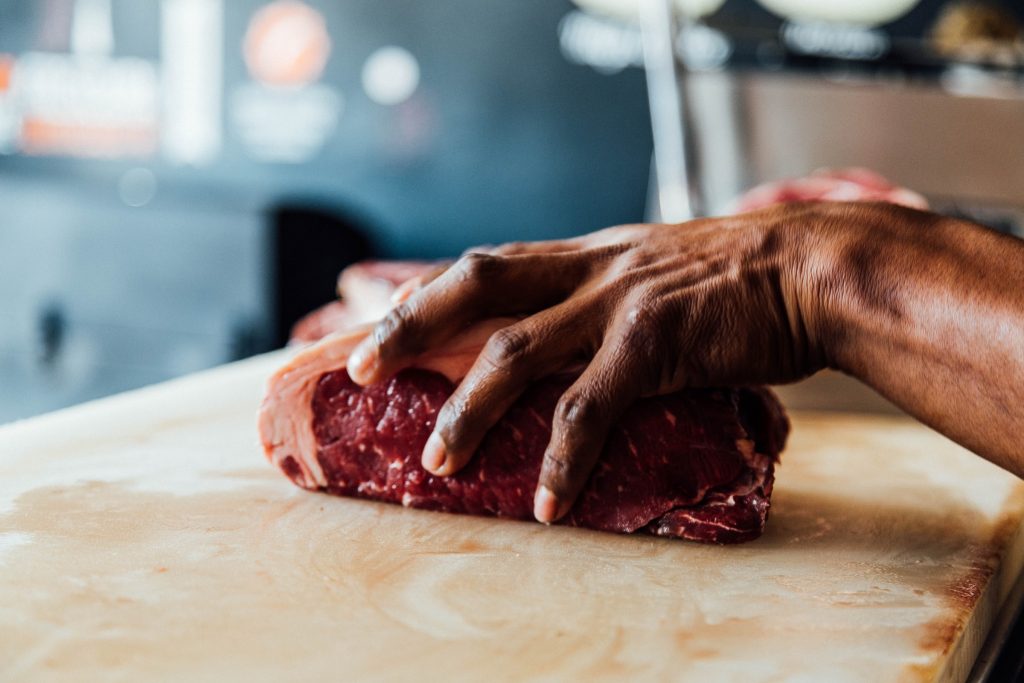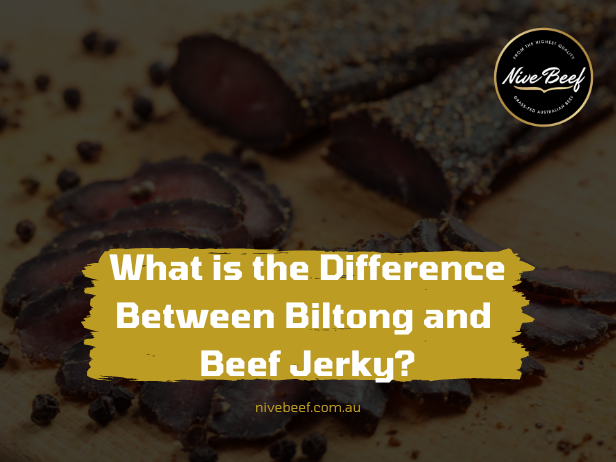As far as great, meaty snacks go, biltong and beef j are right up there. They are both delicious and healthy snacks. They are also considered very similar, with many people getting the two mixed up.
There are many similarities between the two, but they are also very different. Want to know what makes them different? Keep on reading.

What Are the Main Differences Between Biltong and Beef Jerky?
Ingredients
Both meat snacks use a mix of spices that smell good to bring out the flavour. When it comes to the ingredients used, however, that is about the extent of the similarities between the two.
Vinegar plays a significant role in the preservation process that is used for biltong. Then, once the drying process has begun, salt and various spices are combined and added. Coriander, allspice, curry, and clove are some traditional African herbs used in biltong preparation.
In recent years, Worcestershire sauce, brown sugar, chilli peppers, garlic powder, and onion powder have emerged as some of the most popular additional ingredients.
Vinegar is not typically included in the production process of jerky. Jerky relies on sauces and flavouring agents containing sugar and salt to enhance its flavour because making jerky involves heat from a dehydrator or oven.
The beef used to make biltong is typically made from thicker cuts of meat, and the drying process for this beef takes more time. Beef jerky is almost always made from very lean cuts of beef.
In addition, the meat for biltong is typically cut into wider strips, making it simpler to hang dry. This is in contrast to the preparation of jerky, in which the meat is sliced thinly into smaller pieces so that it can be cooked more quickly.
Taste
With different ingredients, beef jerky and biltong obviously taste different. They are both delicious, though! While making biltong, spices and vinegar are added to give it more flavour. On the other hand, jerky has a smokier and dryer flavour than other forms of dried meat.
Jerky typically has less fat than other forms of dried meat, which is another factor that contributes to its slightly drier flavour. On the other hand, biltong has a higher percentage of fat in it, which contributes to its more succulent flavour.
However, this does not imply that all products made from biltong are high in fat. Instead, biltong can have a slightly more varied flavour profile because it can be made chewier and softer by using meats with higher fat content, or it can be made drier by using less fat than normal.
How They Are Made
One of the most important differences between jerky and biltong is how they are made.
When making biltong, the meat is usually left to soak in a mixture of vinegar and spices for at least one night and sometimes for even longer. After being cured, the meat can air-dry without being subjected to any additional heat. Finally, it is packaged or served in its natural state after being cut into thick pieces or thin strips, respectively.
First, the meat is sliced into strips; then, it is either dried on a rack in a dehydrator or cooked in an oven for up to a day and a half. Jerky is made from this process. Compared to biltong, the pieces of meat that result from this process are typically more dry and chewy. Most jerky is soaked in a sweet marinade and salt to keep it tender and flavorful.
Texture
The last distinction is the quality of its texture. The most fundamental form of biltong is a piece of dried steak. This paves the way for individuals to appreciate biltong in its “wet” (or “rare”), “medium,” or “well done” forms, respectively.
Jerky, on the other hand, is made with heat, either from a dehydrator or an oven. This gives it a texture that is usually a little bit dryer than biltong’s and about the same lack of variety as biltong. The majority of jerky products are firm and chewy.
Beef Jerky and Biltong: Two Great Snacks
There are a few primary distinctions to be made between jerky and biltong. If you have to choose between these two meat snacks, the one that will appeal to your personal preferences in terms of taste and texture as well as your overall health objectives is the option you will enjoy more.
It is common for biltong to be chewier, to have a flavour profile that is slightly more complex, and to have a higher percentage of fat content. On the other hand, jerky tends to be drier, smokier, and made with leaner cuts of beef, which gives it a higher protein content while simultaneously reducing the amount of fat calories it has.
If you are looking for a convenient and nutritious snack option, you can not go wrong with biltong or jerky. We suggest that you give your taste buds the opportunity to try both options in order to determine which one you prefer more.

